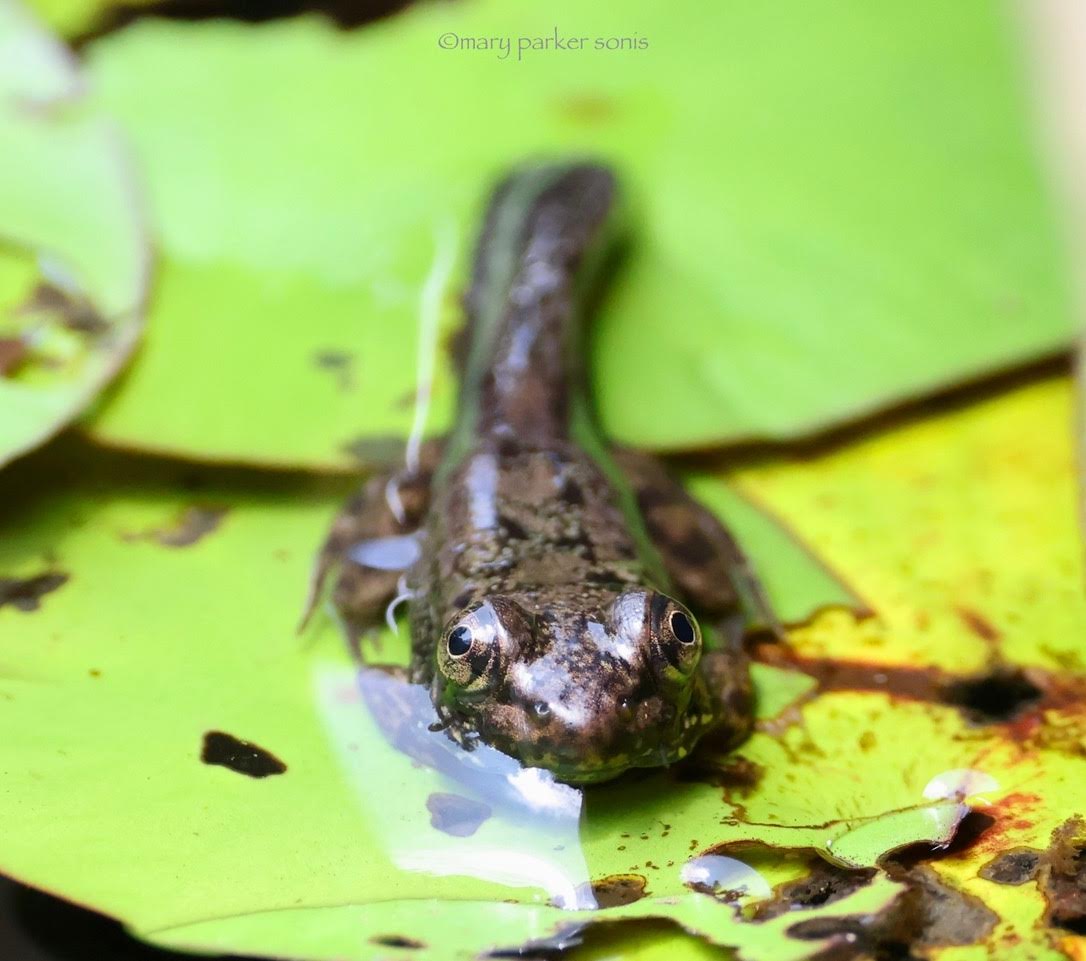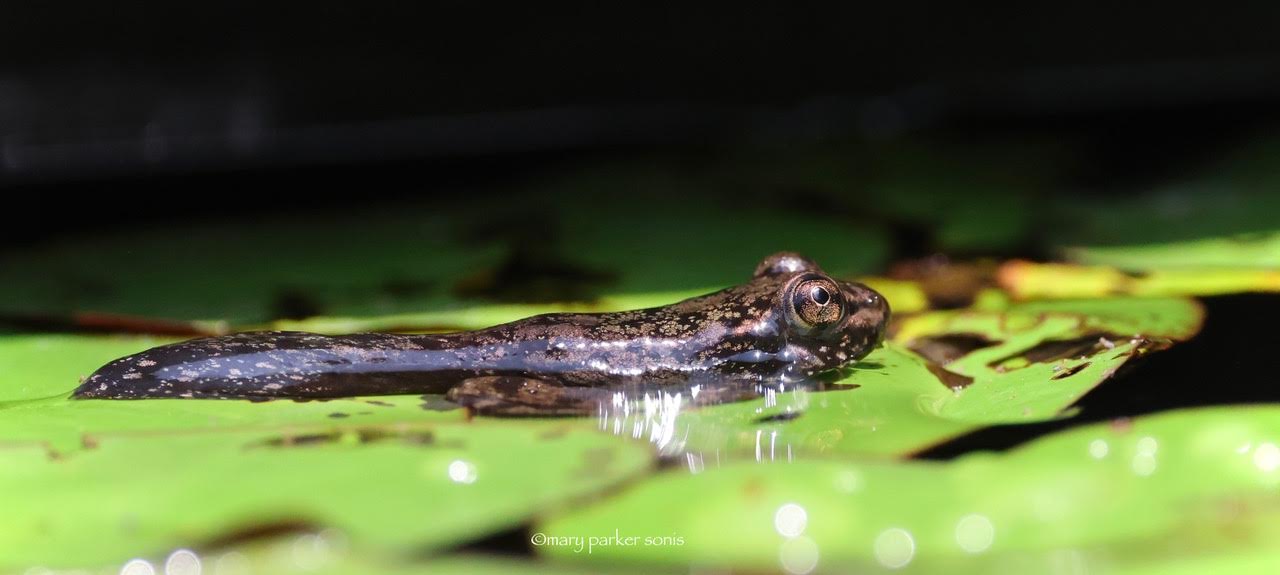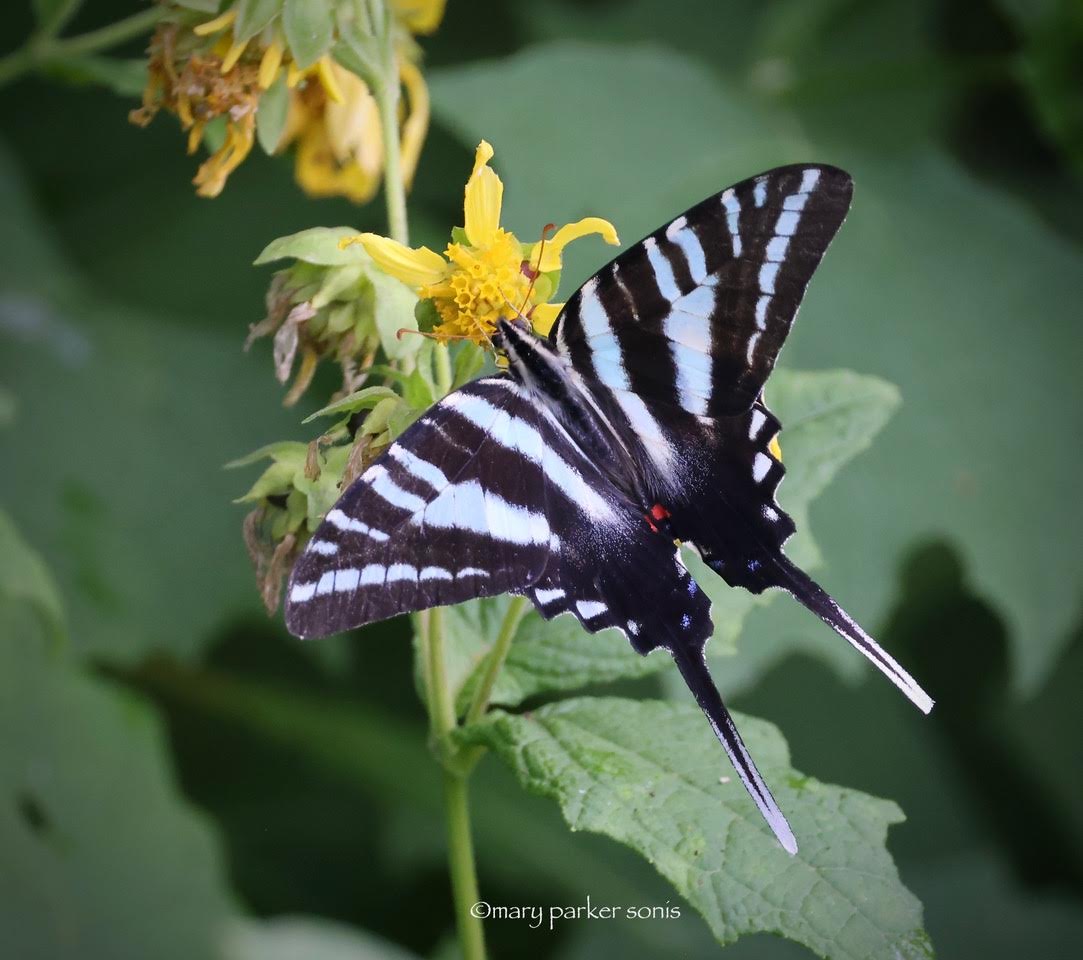Late August evokes a sensation of change. You smell it in the air. Remnants of childhood fuel this feeling of expectation. I remember the Labor Day swim races marked the end of summer, and the beginning of a new school year, the heat of summer broken with an occasional cool breeze, Butterflies nectaring in every garden, Hummingbirds fueling up for migration, flowers offering their last glorious color. As an adult, the excitement comes knowing that bird migration just around the corner.
Everywhere you look, American Goldfinch are flitting about, gathering seeds. Soon they will shed their striking summer plumage, and tone themselves down for winter.
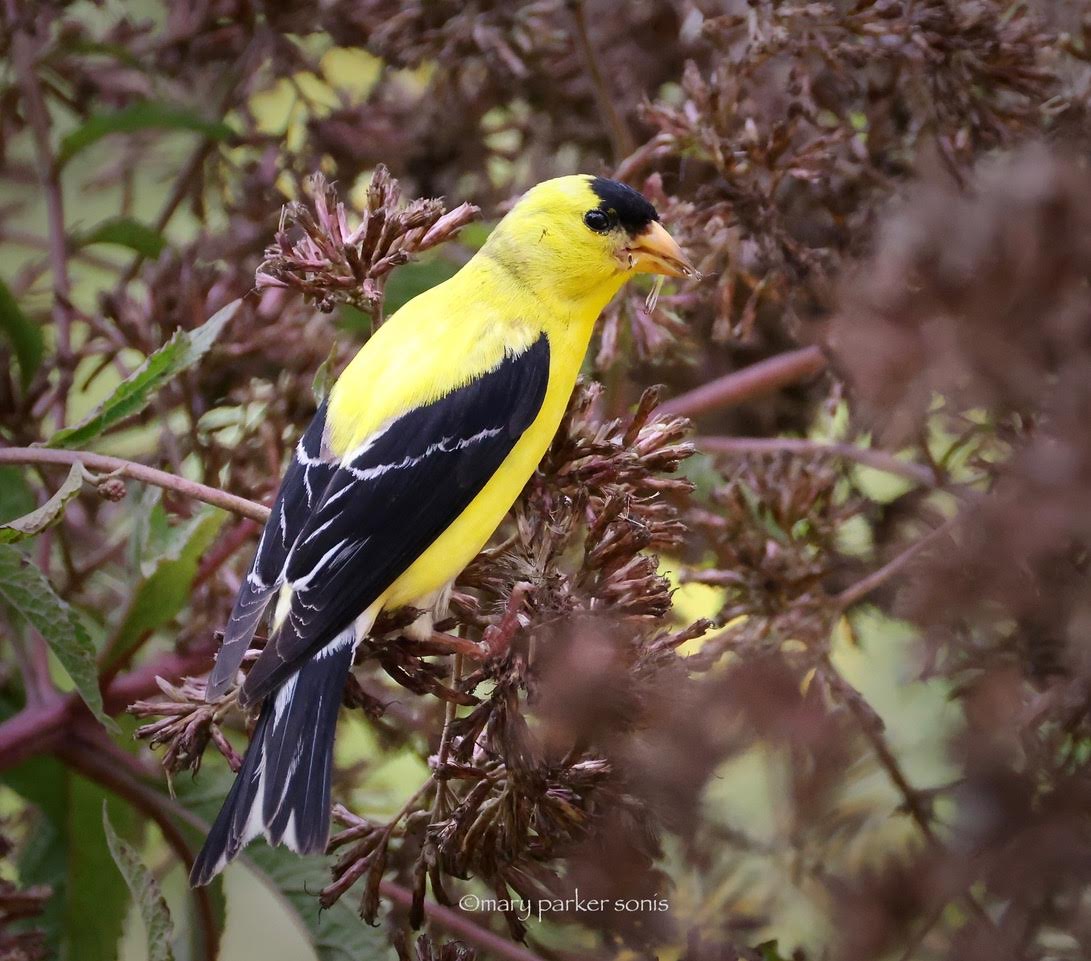
Green froglet, still morphing from tadpole to adult, its tail the last piece to be absorbed.
Sleepy Orange Butterfly on Ironweed. They are called “sleepy” for a tiny dark mark on the forewing, that by some extreme stretch of the imagination reminded someone of closed eyes.
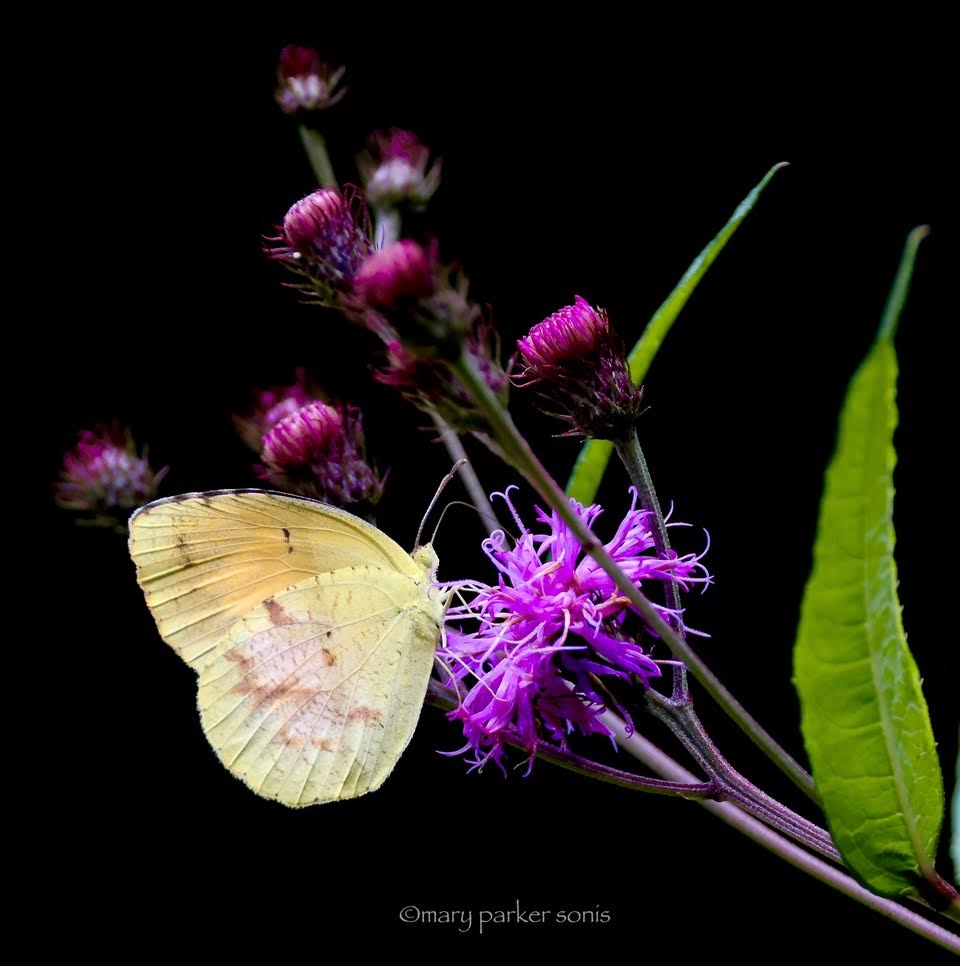
Pale Tiger Moth. Yes, I’m still patrolling the walls of the NCBG.
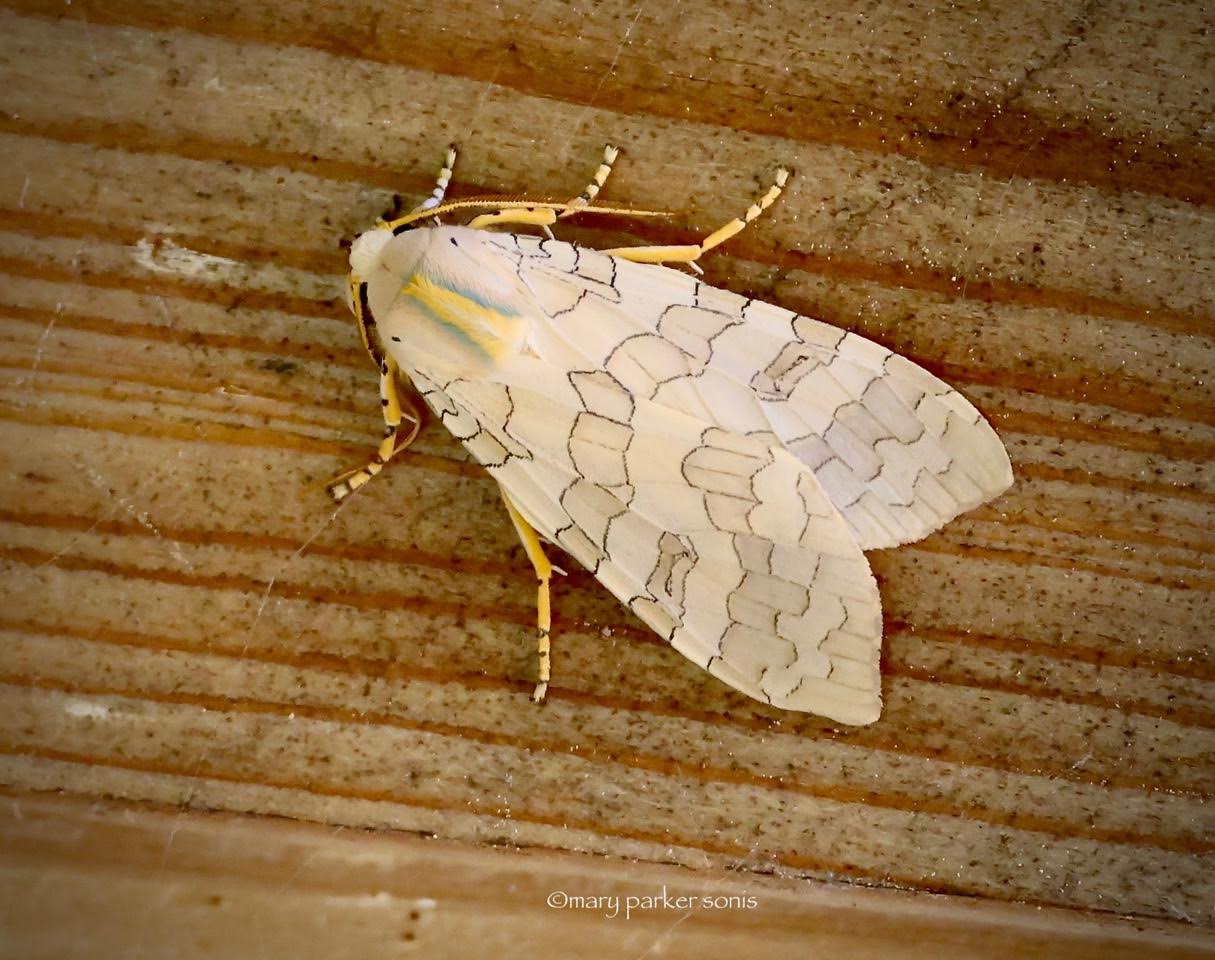
Virginia Creeper Sphinx moth. Thank you Lauren for pointing out this handsome Sphinx.

A bad one. Ainsley discovered this Tomato Hornworm had decimated her perfect Pepper plant overnight. Chris was kind enough not to squish the gourmand, and moved the "all you can eat” caterpillar away from the beautiful Pepper plant to a less decorative part of the garden. These caterpillars are huge, and love to target tomato and pepper plants. It’s never minor damage, as they are voracious eaters. When our children were little, we made many visits to a local life and science museum where they kept a Hornworm display. You could watch them eat, and to add to the experience, the enclosure included small microphones, so visitors could hear the endless munching and crunching. The horn on the tail end is harmless, but as you can imagine, this plump caterpillar is quite attractive to predators. The horn might be trying to look like a stinger. Sometimes, you can see white protrusions coming through the skin of these caterpillars, those are the larvae of parasitic wasps who lay their eggs inside of the caterpillar, where they proceed to eat the caterpillar from the inside out. The white protrusions are the larvae emerging from their zombie host.
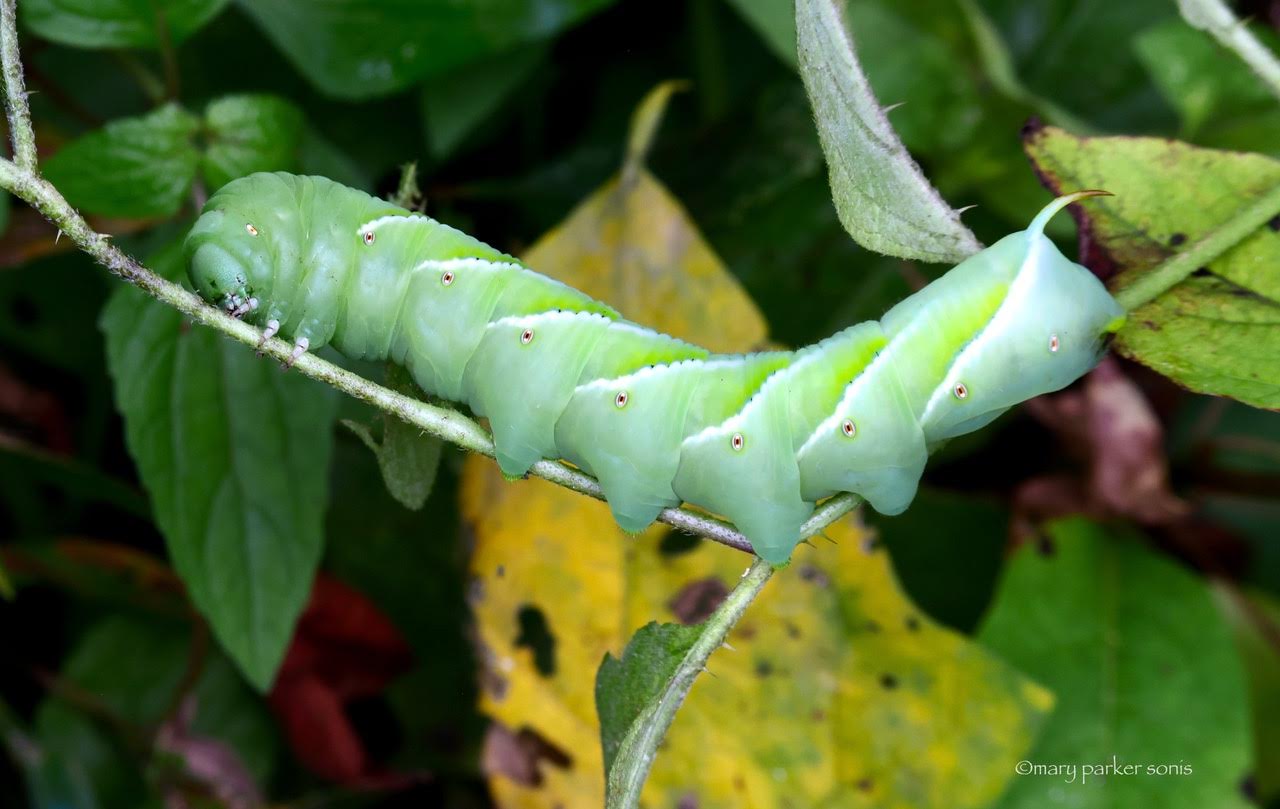
Late August, and right on time the Zebra Swallowtails are emerging, nectaring on a large stand of Bear Foot (Hairy Leafcup). Unlike many butterflies, these Zebras can live for up to six months.
Giant Swallowtail, the largest Butterfly in North America. Thank you Andy for allowing us to visit with you in your magnificent garden.
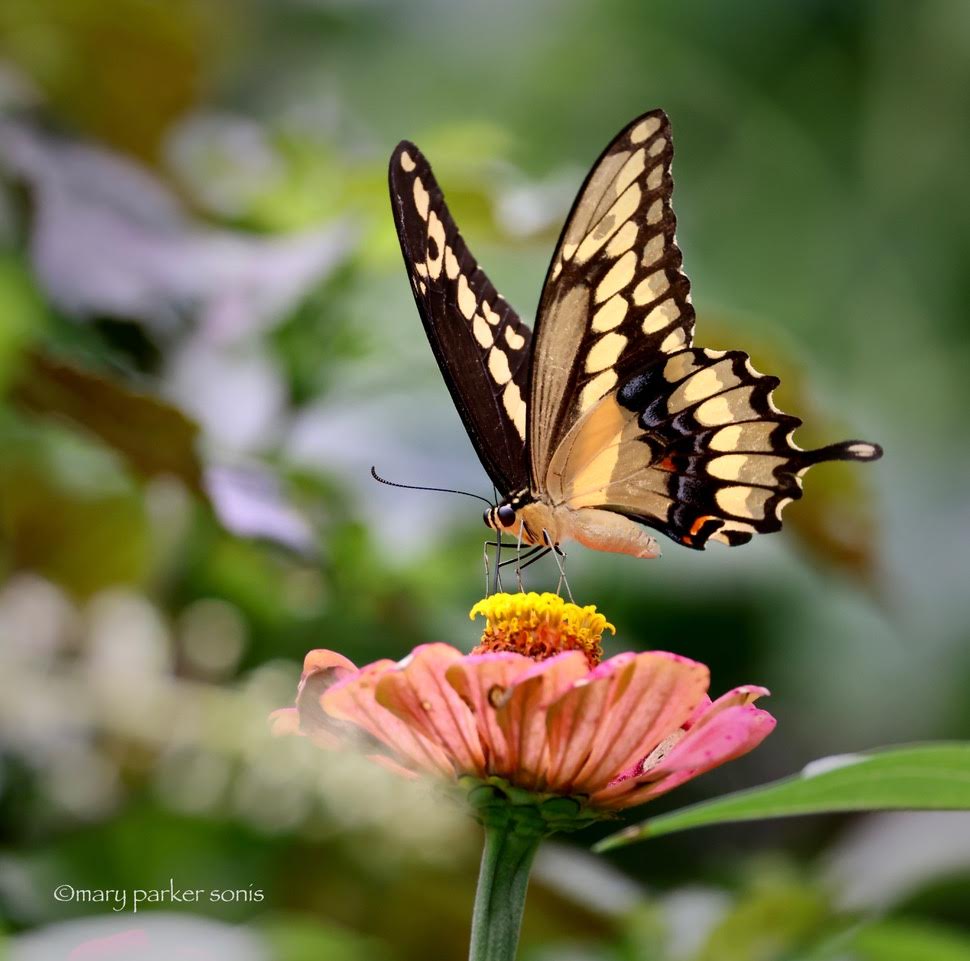
Ruby-throated Hummingbird. I’m curious about this hummer. Is it a young male just getting its first gorget feather, or is it an older female? A mature female Ruby-throated can occasionally display a single red feather at the throat.
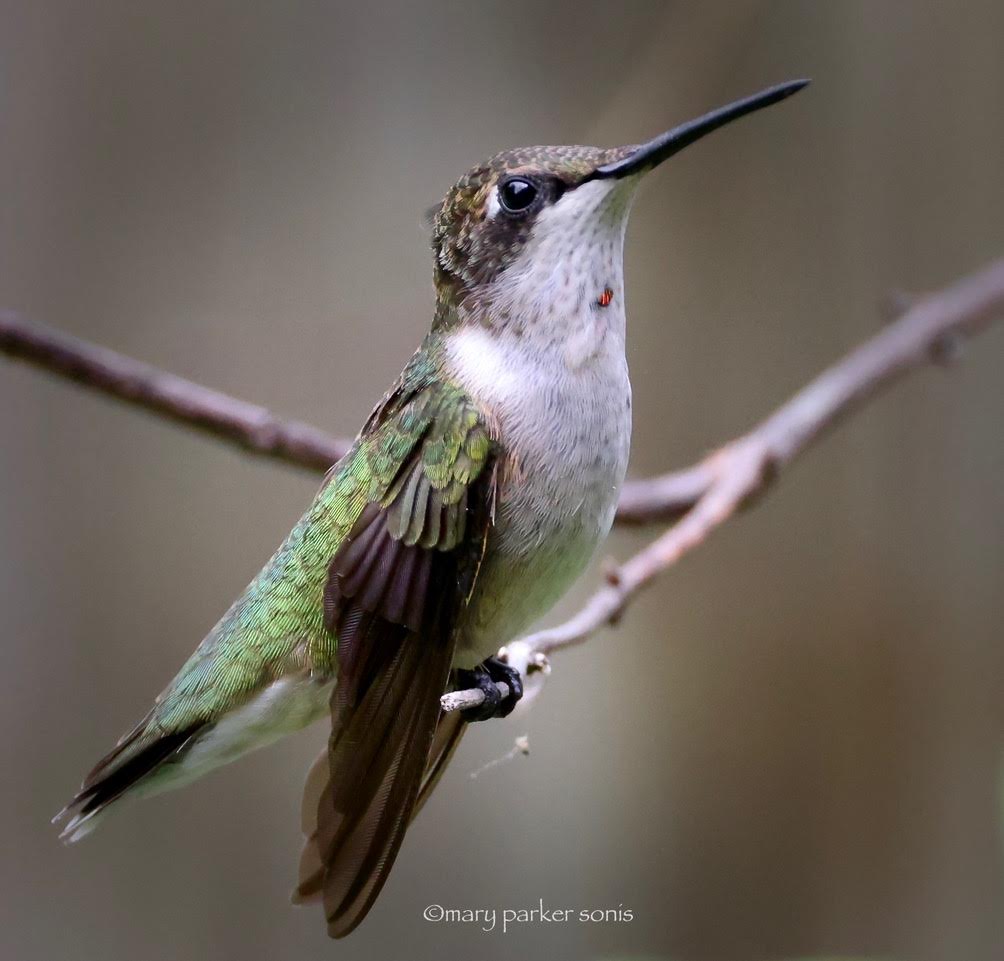
No warbler is as reliable as a Hooded warbler. "I don’t care if you’re watching me, I have business to conduct."

Black and White Warbler
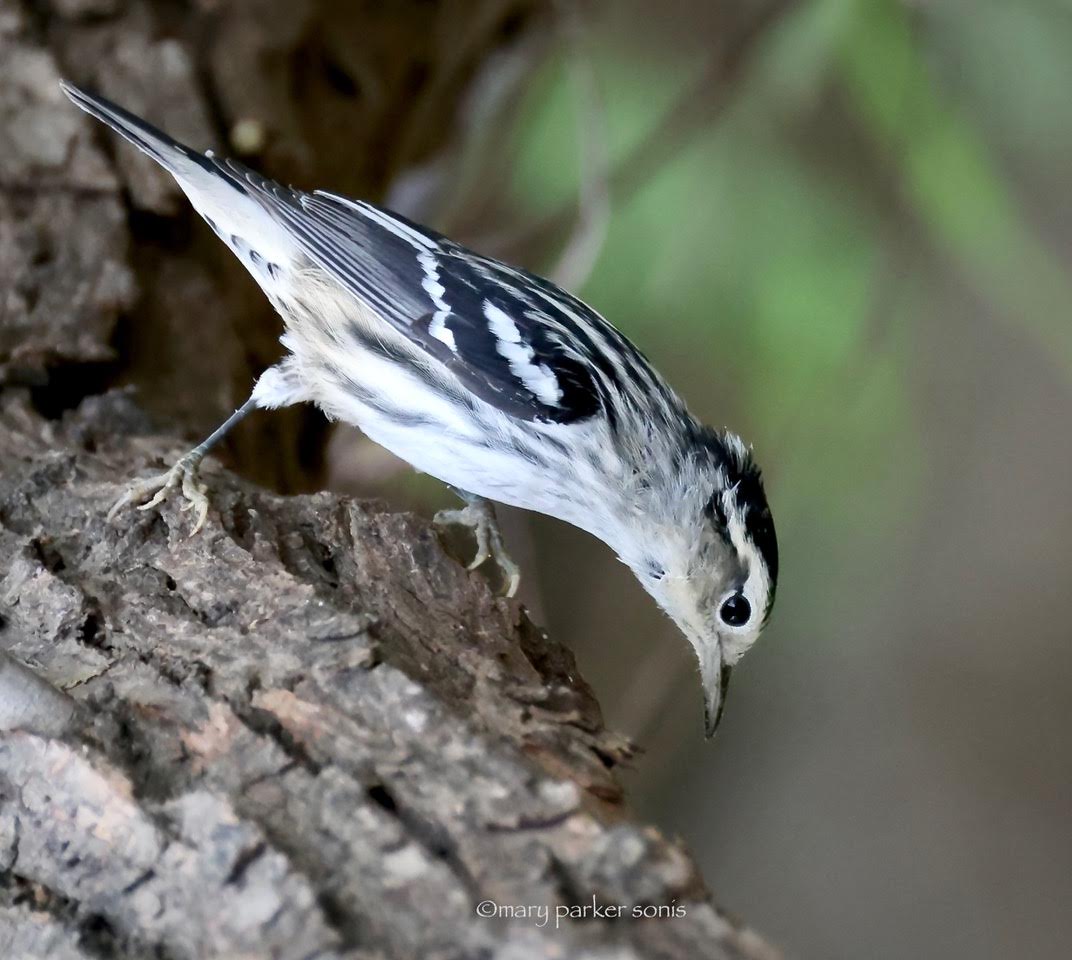
Prize of the summer was located by Matt at the NCBG. These frogs are fairly common, but this male was seen gripping a stem near the lovely yellow flowers of the herb garden. Irresistible.
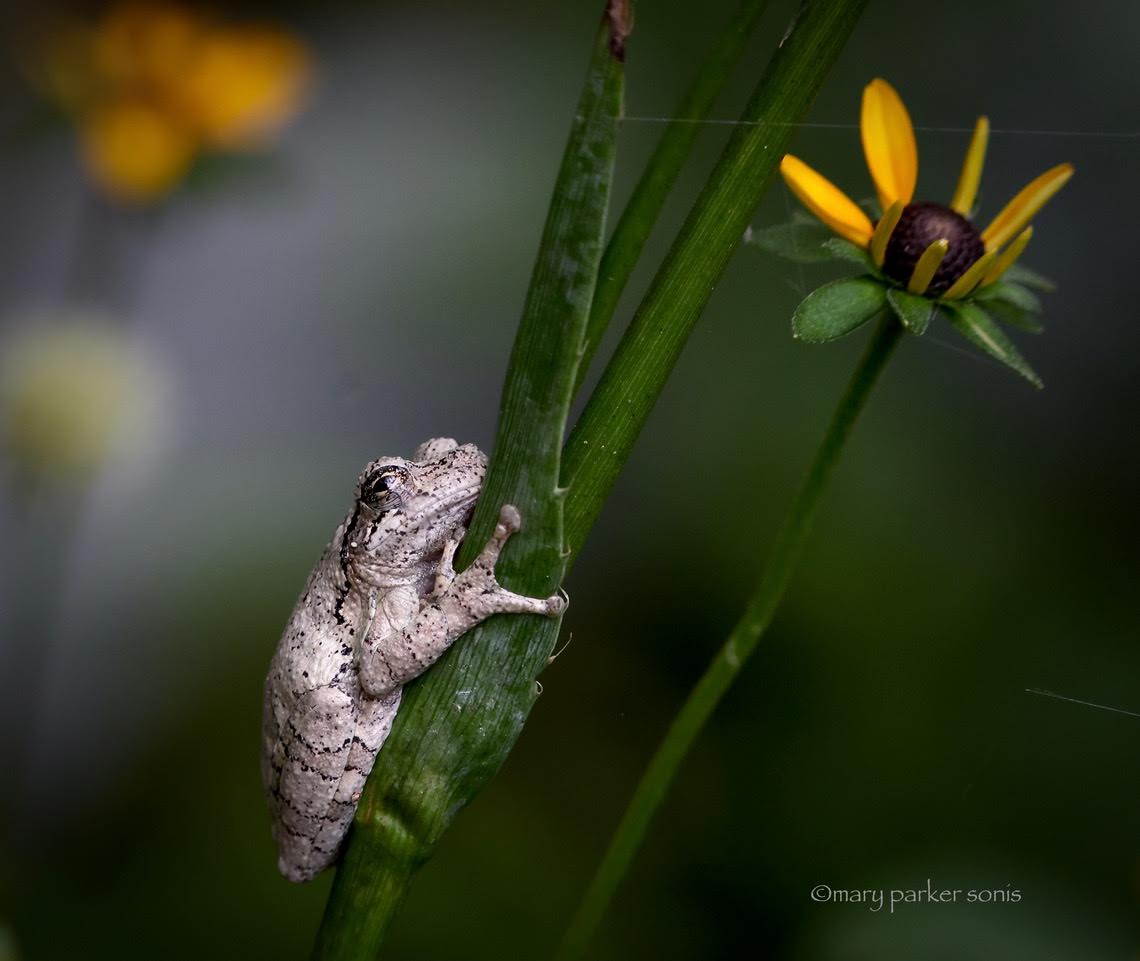
On closer inspection, you can see the frog’s gorgeous marbled patterning. They aren’t large frogs at all. This was a younger individual, a bit over an inch long when his hind legs were tucked beneath him. Yes, I took hundreds of photos of this little frog, but who could resist his charm or his sticky spatulate fingers?
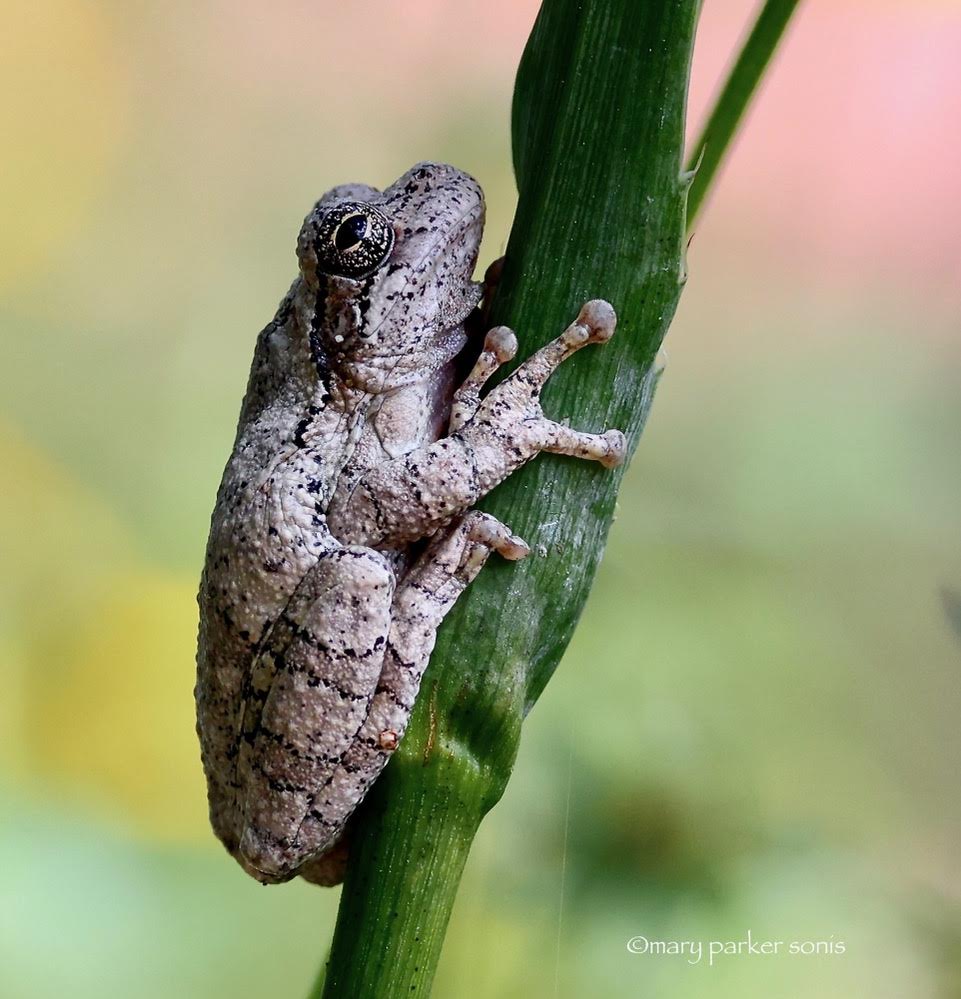
Eventually, the Cope’s made a grand leap away for the flowers and tucked in closer to the ground.

Great Egret hunting the Mason Farm pond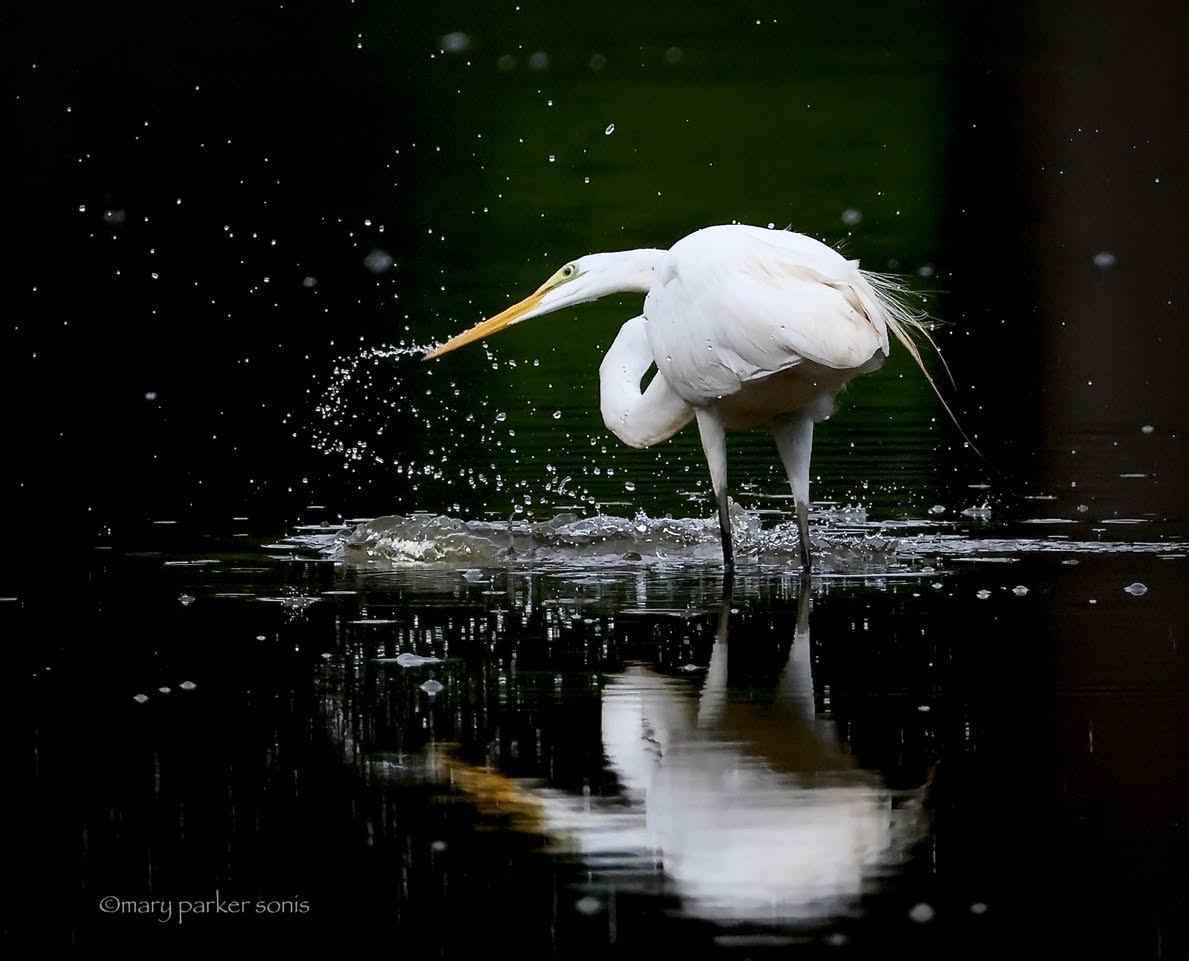
Thank you to the staff at the NCBG for sharing your knowledge and beautiful garden finds.
Happy trails from Carrboro, Chapel Hill, and Chatham County.
Love,
Mary K
